-
 Bitcoin
Bitcoin $115000
0.12% -
 Ethereum
Ethereum $3701
4.50% -
 XRP
XRP $3.081
2.99% -
 Tether USDt
Tether USDt $0.0000
-0.01% -
 BNB
BNB $767.9
1.45% -
 Solana
Solana $169.5
3.13% -
 USDC
USDC $0.9999
0.01% -
 Dogecoin
Dogecoin $0.2106
4.30% -
 TRON
TRON $0.3334
1.62% -
 Cardano
Cardano $0.7564
2.54% -
 Stellar
Stellar $0.4165
0.76% -
 Hyperliquid
Hyperliquid $38.75
0.25% -
 Sui
Sui $3.593
3.00% -
 Chainlink
Chainlink $17.08
3.59% -
 Bitcoin Cash
Bitcoin Cash $573.6
4.35% -
 Hedera
Hedera $0.2508
-0.84% -
 Avalanche
Avalanche $23.07
6.46% -
 Ethena USDe
Ethena USDe $1.001
-0.02% -
 Litecoin
Litecoin $120.8
8.17% -
 UNUS SED LEO
UNUS SED LEO $8.943
-0.32% -
 Toncoin
Toncoin $3.400
-5.60% -
 Shiba Inu
Shiba Inu $0.00001255
1.54% -
 Uniswap
Uniswap $9.908
6.32% -
 Polkadot
Polkadot $3.718
2.10% -
 Monero
Monero $303.0
-0.74% -
 Dai
Dai $0.9999
-0.02% -
 Bitget Token
Bitget Token $4.392
0.91% -
 Cronos
Cronos $0.1403
6.31% -
 Pepe
Pepe $0.00001076
1.13% -
 Aave
Aave $267.2
1.80%
Who is the issuing company of USDT?
Tether Holdings Limited issues USDT, a stablecoin whose dollar backing and operational transparency remain highly debated, posing significant risks for users despite its widespread adoption.
Mar 16, 2025 at 04:56 am

Key Points:
- Tether Holdings Limited is the company that issues USDT, a stablecoin pegged to the US dollar.
- The company's operations and reserves are subject to ongoing scrutiny and debate within the cryptocurrency community.
- Understanding Tether's structure and the controversies surrounding it is crucial for anyone investing in or using USDT.
- While USDT is widely used, it's important to be aware of the risks involved in relying on a centralized stablecoin.
Who is the issuing company of USDT?
Tether Limited, a company incorporated in the British Virgin Islands, is the issuer of the USDT stablecoin. This company claims to maintain reserves equal to or exceeding the number of USDT in circulation, ensuring each USDT is backed by one US dollar. However, the exact composition and accessibility of these reserves have been a subject of considerable debate and regulatory scrutiny. The lack of complete transparency surrounding Tether's operations contributes significantly to the ongoing discussion around its stability and trustworthiness.
What is the structure of Tether Holdings Limited?
The organizational structure of Tether Holdings Limited, while publicly available to some extent, remains somewhat opaque. Key personnel and their roles are known, but the intricate details of its internal workings and decision-making processes aren't fully transparent. This lack of transparency fuels skepticism within the cryptocurrency community, particularly regarding the management of its reserves and compliance with regulations. The company’s offshore location also adds another layer of complexity and potential regulatory hurdles.
What are the controversies surrounding Tether?
Tether's history is marked by several controversies that continue to fuel debates about its credibility and solvency. These controversies primarily center around the nature and composition of its reserves, with allegations of insufficient backing and concerns regarding the company's accounting practices. Legal battles and investigations have further intensified the scrutiny surrounding Tether's operations, raising questions about the true value backing each USDT token.
How are USDT reserves audited?
The auditing of Tether's reserves has been a major point of contention. While Tether has claimed to have undergone audits in the past, these audits have often been met with criticism for lacking sufficient transparency and independence. This has led many to question the reliability of the reported reserve figures and the overall trustworthiness of the audit process itself. The ongoing lack of consistent and comprehensive audits fuels uncertainty and distrust among investors.
What are the risks associated with using USDT?
The primary risk associated with using USDT lies in the potential for a de-pegging event, where the value of USDT drops below its intended $1 peg. This could occur if Tether's reserves prove insufficient to cover all outstanding USDT, leading to significant losses for holders. The centralized nature of USDT also presents a risk, as a single point of failure could impact the entire system. Regulatory actions against Tether could also severely affect the value and stability of the token.
What are the alternatives to USDT?
Several alternative stablecoins exist, each with its own strengths and weaknesses. Some are backed by a basket of fiat currencies, while others rely on over-collateralization with cryptocurrencies. Each alternative offers a different risk profile, and users should carefully research their options before choosing a stablecoin. Decentralized stablecoins are also emerging, aiming to offer greater transparency and resistance to censorship.
How does USDT differ from other stablecoins?
USDT distinguishes itself from other stablecoins primarily through its market dominance and longevity. While other stablecoins may offer different backing mechanisms or technological approaches, USDT's widespread adoption makes it a prominent player in the cryptocurrency market. However, this dominance also makes it a larger target for regulatory scrutiny and potential risks associated with its centralized nature. The ongoing controversies surrounding Tether highlight the need for careful comparison with alternative stablecoins.
What is the future of USDT?
The future of USDT remains uncertain. Continued regulatory pressure and ongoing scrutiny of its reserves could significantly impact its market position. The emergence of alternative stablecoins and the growing interest in decentralized finance (DeFi) also pose a challenge to USDT's dominance. The ability of Tether to maintain transparency and build trust will be crucial to its continued success.
What are the regulatory implications for Tether?
Tether's operations have faced increasing regulatory scrutiny from various jurisdictions worldwide. Concerns about its reserves, transparency, and potential market manipulation have led to investigations and legal challenges. The outcome of these regulatory actions could significantly impact Tether's future and the wider cryptocurrency market. Compliance with evolving regulations will be vital for Tether's long-term sustainability.
Common Questions and Answers:
Q: Is USDT backed by the US dollar one-to-one? A: Tether claims a one-to-one backing, but the exact composition and verification of its reserves remain contentious.
Q: Is Tether a safe investment? A: The safety of investing in USDT is debatable due to the ongoing controversies and lack of complete transparency surrounding its reserves.
Q: What are the legal risks associated with USDT? A: Legal risks include potential de-pegging, regulatory actions against Tether, and investigations into its operations.
Q: Are there any alternatives to USDT that offer greater transparency? A: Yes, several alternative stablecoins aim for greater transparency through different mechanisms, including audits and open-source code.
Q: How can I verify the reserves of USDT? A: Complete independent verification of Tether's reserves is currently unavailable, leading to ongoing debates about its true backing.
Disclaimer:info@kdj.com
The information provided is not trading advice. kdj.com does not assume any responsibility for any investments made based on the information provided in this article. Cryptocurrencies are highly volatile and it is highly recommended that you invest with caution after thorough research!
If you believe that the content used on this website infringes your copyright, please contact us immediately (info@kdj.com) and we will delete it promptly.
- Crypto Volatility & Token Unlocks: Navigating the Storm
- 2025-08-05 16:30:13
- SUI Traders Eye Discount: Is Now the Time to Buy?
- 2025-08-05 16:30:13
- Bitcoin, Fed Rate Cut, and Crypto Stocks: A New Yorker's Take
- 2025-08-05 14:50:12
- Police, Cryptocurrency, Bitcoin Windfall: Unexpected Gains and Cautionary Tales
- 2025-08-05 15:30:12
- MAGACOIN: The Next Shiba Inu ROI? A Crypto Presale Deep Dive
- 2025-08-05 15:30:12
- BitMine's Ethereum Treasury: A New York Minute to Crypto Domination
- 2025-08-05 15:50:12
Related knowledge
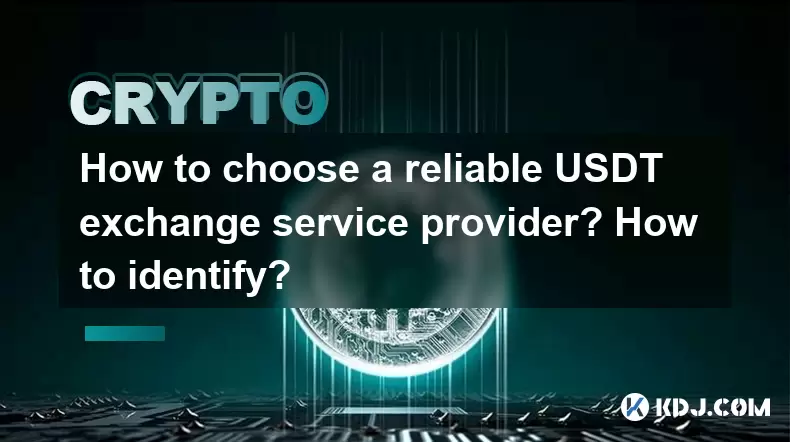
How to choose a reliable USDT exchange service provider? How to identify?
Jun 12,2025 at 03:15pm
Understanding the Role of USDT in Cryptocurrency TradingUSDT (Tether) is one of the most widely used stablecoins in the cryptocurrency market. It is d...
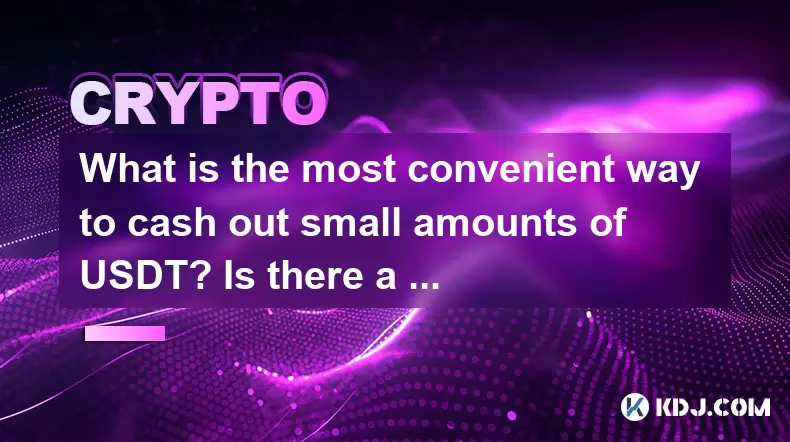
What is the most convenient way to cash out small amounts of USDT? Is there a shortcut?
Jun 11,2025 at 11:00pm
Understanding the Need to Cash Out Small USDT AmountsCashing out small amounts of USDT can be a challenge for many crypto users. Traditional methods o...
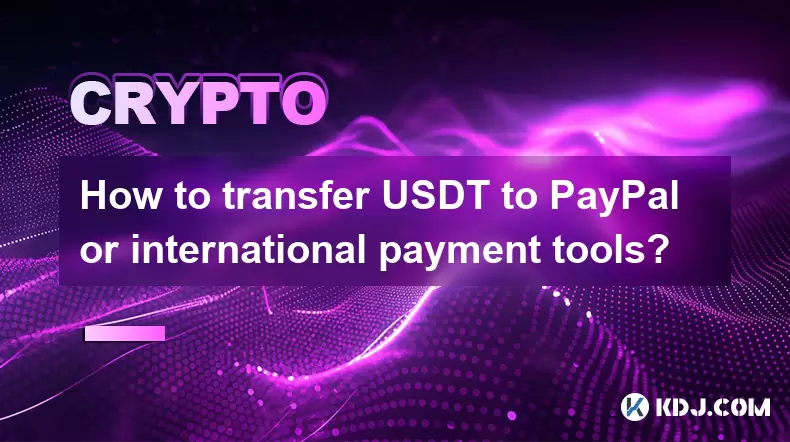
How to transfer USDT to PayPal or international payment tools?
Jun 15,2025 at 05:28am
Understanding the Basics of USDT and PayPal IntegrationUSDT (Tether) is a stablecoin pegged to the US dollar, offering blockchain-based value transfer...
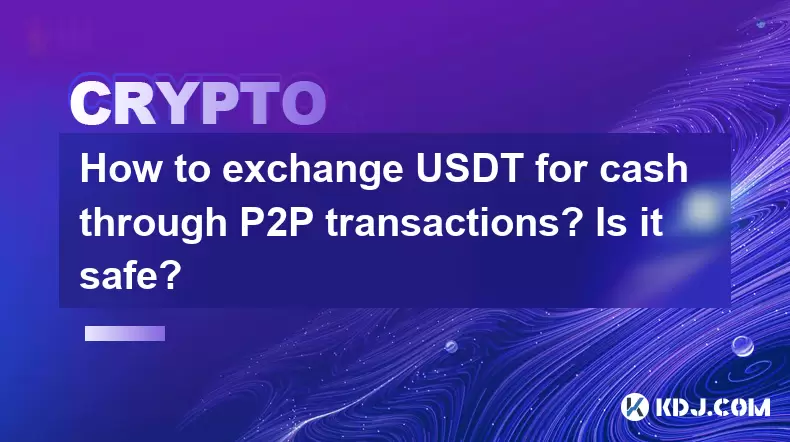
How to exchange USDT for cash through P2P transactions? Is it safe?
Jun 18,2025 at 07:56am
Understanding USDT and P2P TransactionsTether (USDT) is a stablecoin pegged to the value of the US dollar, making it a popular choice for users who wa...
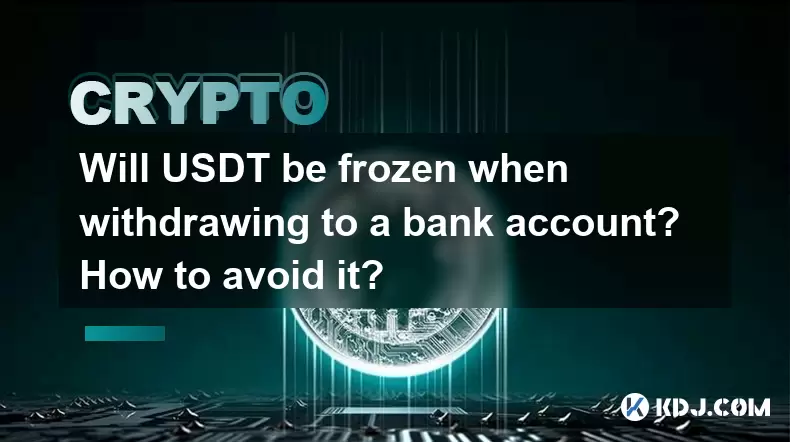
Will USDT be frozen when withdrawing to a bank account? How to avoid it?
Jun 15,2025 at 10:03am
Understanding USDT Withdrawals and Bank Account Freezing RisksWhen users decide to withdraw USDT (Tether) to a bank account, one of the most common co...
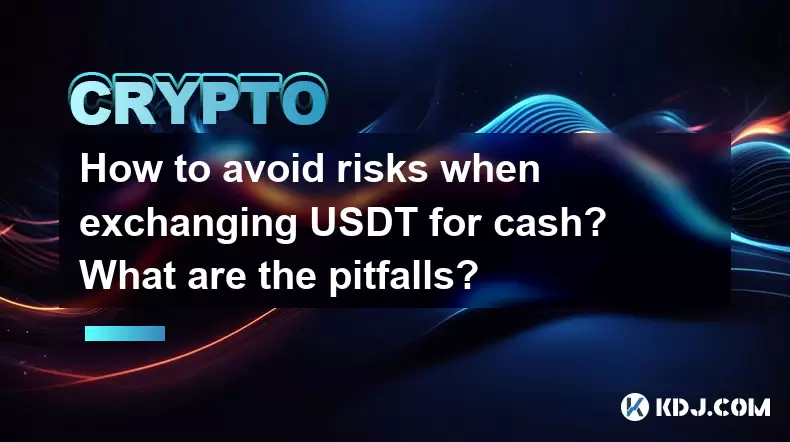
How to avoid risks when exchanging USDT for cash? What are the pitfalls?
Jun 11,2025 at 08:14pm
Understanding the Risks of Exchanging USDT for CashWhen exchanging USDT (Tether) for cash, users must be aware of the potential risks involved. As a s...

How to choose a reliable USDT exchange service provider? How to identify?
Jun 12,2025 at 03:15pm
Understanding the Role of USDT in Cryptocurrency TradingUSDT (Tether) is one of the most widely used stablecoins in the cryptocurrency market. It is d...

What is the most convenient way to cash out small amounts of USDT? Is there a shortcut?
Jun 11,2025 at 11:00pm
Understanding the Need to Cash Out Small USDT AmountsCashing out small amounts of USDT can be a challenge for many crypto users. Traditional methods o...

How to transfer USDT to PayPal or international payment tools?
Jun 15,2025 at 05:28am
Understanding the Basics of USDT and PayPal IntegrationUSDT (Tether) is a stablecoin pegged to the US dollar, offering blockchain-based value transfer...

How to exchange USDT for cash through P2P transactions? Is it safe?
Jun 18,2025 at 07:56am
Understanding USDT and P2P TransactionsTether (USDT) is a stablecoin pegged to the value of the US dollar, making it a popular choice for users who wa...

Will USDT be frozen when withdrawing to a bank account? How to avoid it?
Jun 15,2025 at 10:03am
Understanding USDT Withdrawals and Bank Account Freezing RisksWhen users decide to withdraw USDT (Tether) to a bank account, one of the most common co...

How to avoid risks when exchanging USDT for cash? What are the pitfalls?
Jun 11,2025 at 08:14pm
Understanding the Risks of Exchanging USDT for CashWhen exchanging USDT (Tether) for cash, users must be aware of the potential risks involved. As a s...
See all articles

























































































